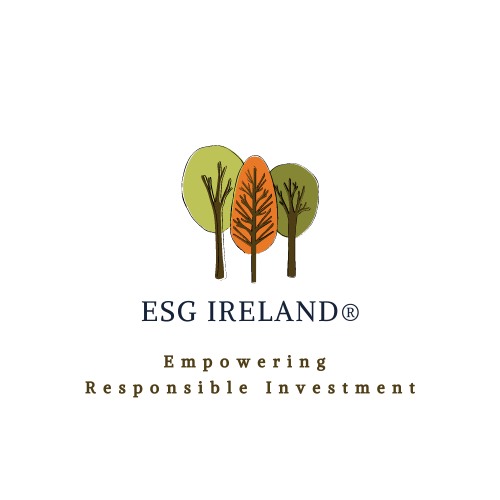The Coronavirus and ESG Investing - The Emergence of the Social Pillar


Takaya Sekine, Deputy Head of Quantitative Research Fréderic Lepetit , Head of Equity Quantitative Research Amundi
Since the beginning of the coronavirus crisis and the subsequent global lockdown, we have seen a lot of market turmoil putting corporates’ sustainability under tremendous scrutiny. In this context, we have also seen discussions around a possible reinforcement of the materiality of ESG criteria on corporate resilience. This would have a huge impact on potential relative investor preferences.
Amundi’s research department has been closely studying ESG investing in recent years, looking in particular at ESG integration’s impact on market prices. For the past two years, we have published several papers [1] showing that ESG criteria, usually called “extra-financial”, are in fact metrics that are financially material. We identified a breakthrough in 2014 on equity markets, meaning that from 2014 onwards, ESG has been a source of outperformance. In addition, we identified that ESG is increasingly integrated into the pricing of corporate bonds, and how ESG affects the cost of corporate debt.
However, some discrepancies have been identified between Europe and North America. In both research for Equity and Credit, we confirmed the emergence of a transatlantic divide for the integration of ESG (by which we mean that ESG integration is more advanced in Europe than in the United States). Annualized returns following ESG, E, S or G integration are much higher in the Eurozone than in North America, over the 2014-2019 period, and that gap has been growing recently.
When focusing on this very specific Pandemic crisis period (Q1 2020), we have identified three major findings regarding how markets have behaved.
- The traditional factor returns dislocated during this period.
- Partly owing to the sector-neutral construction of Amundi ESG scores, ESG returns have been stable during the crisis.
- The Social pillar has shown a very positive response in North America in this COVID-19 environment.
This S-related outcome is relatively new, actually. In our previous research, we had highlighted the Social pillar as a laggard. Indeed, if Environment and Governance had enjoyed positive performance since 2014, the Social pillar’s performance started to emerge only from 2016.
During the coronavirus crisis, the social pillar has witnessed very strong performance, but in North America only. Therefore, the transatlantic divide in ESG still exists, but in the times of the coronavirus, it has taken on a new form: outperformance of the S in North America, relative to the Eurozone.



Reasons to explain such a phenomenon
To understand the forward-looking anticipation of investors, the general economic context is very important. To set the scene, between the first quarter and the third quarter of 2019, the probability of having a recession in the US, as predicted by the treasury spread, had significantly increased, crossing the 30% threshold [3] which is historically followed by contractions. The spread level translates the perceived significant fragility of the US and global economies.
In this exceptional context, and while in the Eurozone all eyes are on emergency public policies to support employment conditions, investors tend to assess North American and especially US corporates through the angle of their financial stability and their extra-financial social dimension. In such a case, S features would have been under greater focus, weighing on investment decisions for their link to employment conditions and expected materiality on company resilience. Investors would have searched in the S pillar the capacity of corporates to weather the crisis and to maintain a workforce enabling a rebound in output.
How these recent results are directing our future research and what are the upcoming dimensions being explored?
For the past couple of years, we have demonstrated that financial markets have started to integrate those extra-financial criteria, but through diverse rhythms and dynamics. Whether it is related to the Transatlantic divide or the recent emergence of the S, past performances are a testimony of growing integration of ESG criteria, triggered by “responsible investment” interests per say or the search for their indirect materiality.
The ESG world is moving fast and it opens a wide range of analysis.
In light of these results, we will be pursuing our research efforts on the S, which has been clearly growing in importance in the ESG universe. The coronavirus pandemic has not halted this momentum, on the contrary. We are convinced that the crisis is and will continue to put the S dimension in the limelight, making it crucial for investors.
We are also strengthening our research efforts on several streams, including the following:
- continuing our research on the materiality of ESG in investment processes;
- we have been looking at the integration of climate change in economic models;
- we believe that the mainstreaming of the Environment pillar for investors and issuers is a very strong trend. We have multiple research items in this dimension ranging from formalizing a carbon factor in a conservative investment process, assessing emission intensity trajectories, formalizing the green premium.
End
*Note: This article is a shorter version of a more detailed article. See Link for full version.
E-mail Insights@ESG.ie to subscribe to the latest insights.
References:
1) 1. Bennani, L., Le Guenedal, T., Lepetit, F., Ly, L., Mortier, V., and Sekine, T. (2018a), The Alpha and Beta of ESG Investing, Amundi Working Paper, 76, http://research-center.amundi.com. Drei, A., Le Guenedal, T., Lepetit, F., Mortier, V., Roncalli, T. and Sekine, T. (2019), ESG Investing in Recent Years: New Insights from Old Challenges, Amundi Discussion Paper, 42, www.research-center. amundi.com. Ben Slimane, M., Le Guenedal, T., Roncalli, T. and Sekine, T. (2019), ESG Investing in Corporate Bonds: Mind the Gap, Amundi Working Paper, 93, http://research-center.amundi.com.
2) We analyzed the distribution of T-stats of industry and style common factors in monthly performance attributions with the MSCI Barra Global Equity Model (GEM3).
3) Federal Reserve Bank of New York
4) Le Guenedal, T. (2019), Economic Modeling of Climate Risks, Amundi Working Paper, 83, http://research-center.amundi.com.
5) Bouchet, V. and Le Guenedal, T. (2020), Credit Risk Sensitivity to Carbon Price, Amundi Working Paper, 95, http://research-center.amundi.com.
IMPORTANT INFORMATION
Unless otherwise stated, all information contained in this document is from Amundi Asset Management S.A.S. and is as of 03 June 2020. Diversification does not guarantee a profit or protect against a loss. The views expressed regarding market and economic trends are those of the author and not necessarily Amundi Asset Management S.A.S. and are subject to change at any time based on market and other conditions, and there can be no assurance that countries, markets or sectors will perform as expected. These views should not be relied upon as investment advice, a security recommendation, or as an indication of trading for any Amundi product. This material does not constitute an offer or solicitation to buy or sell any security, fund units or services. Investment involves risks, including market, political, liquidity and currency risks. Past performance is not a guarantee or indicative of future results.
The content of this document is approved by Amundi Ireland Limited which is authorised and regulated by the Central Bank of Ireland.
